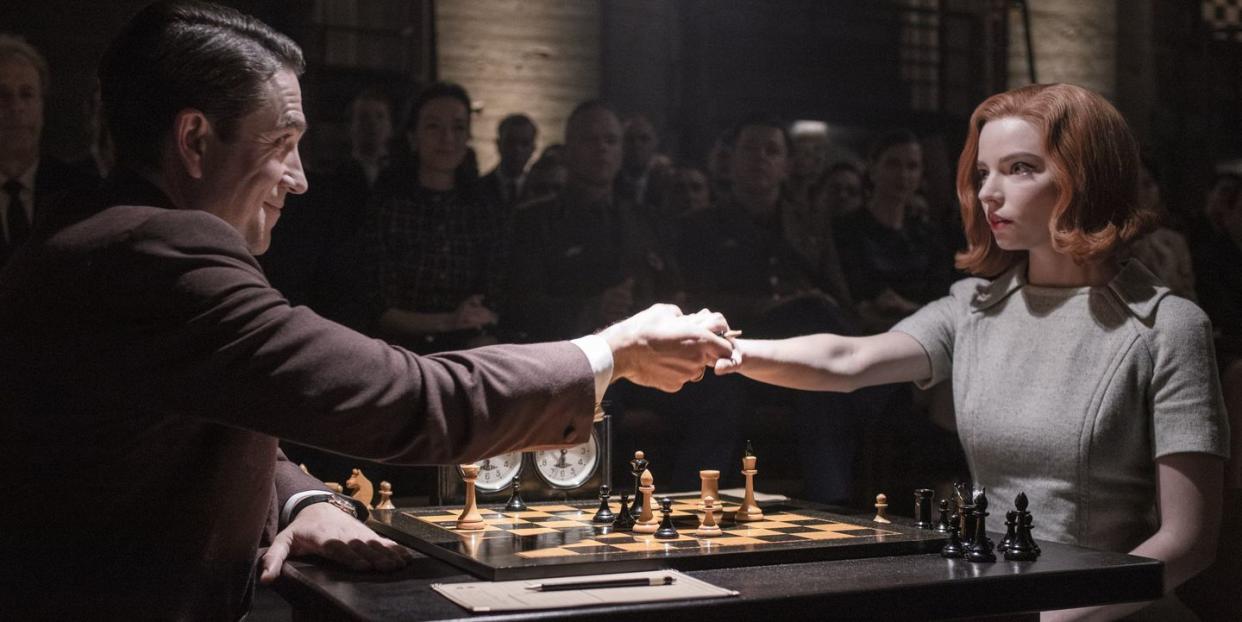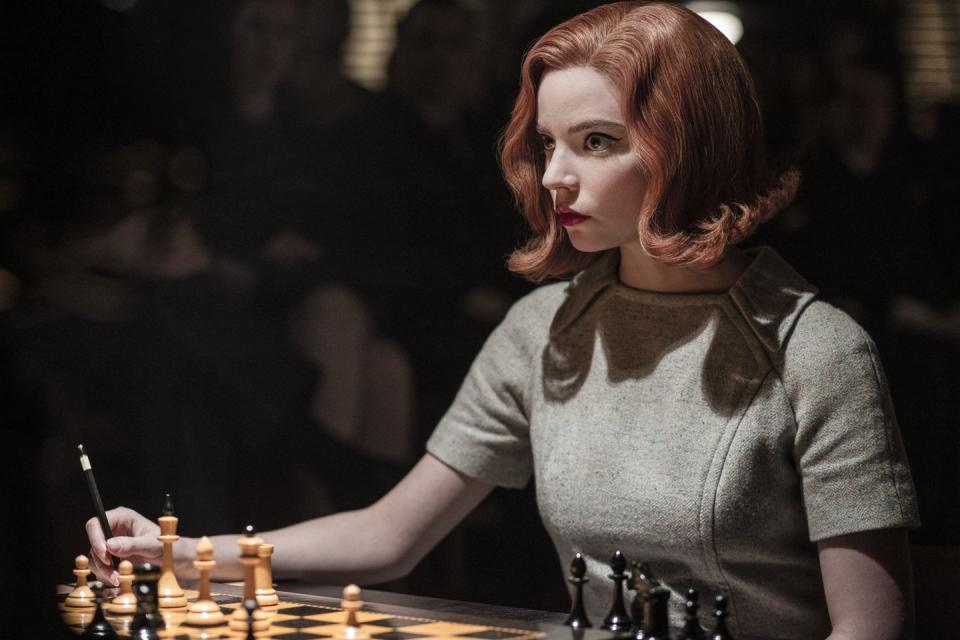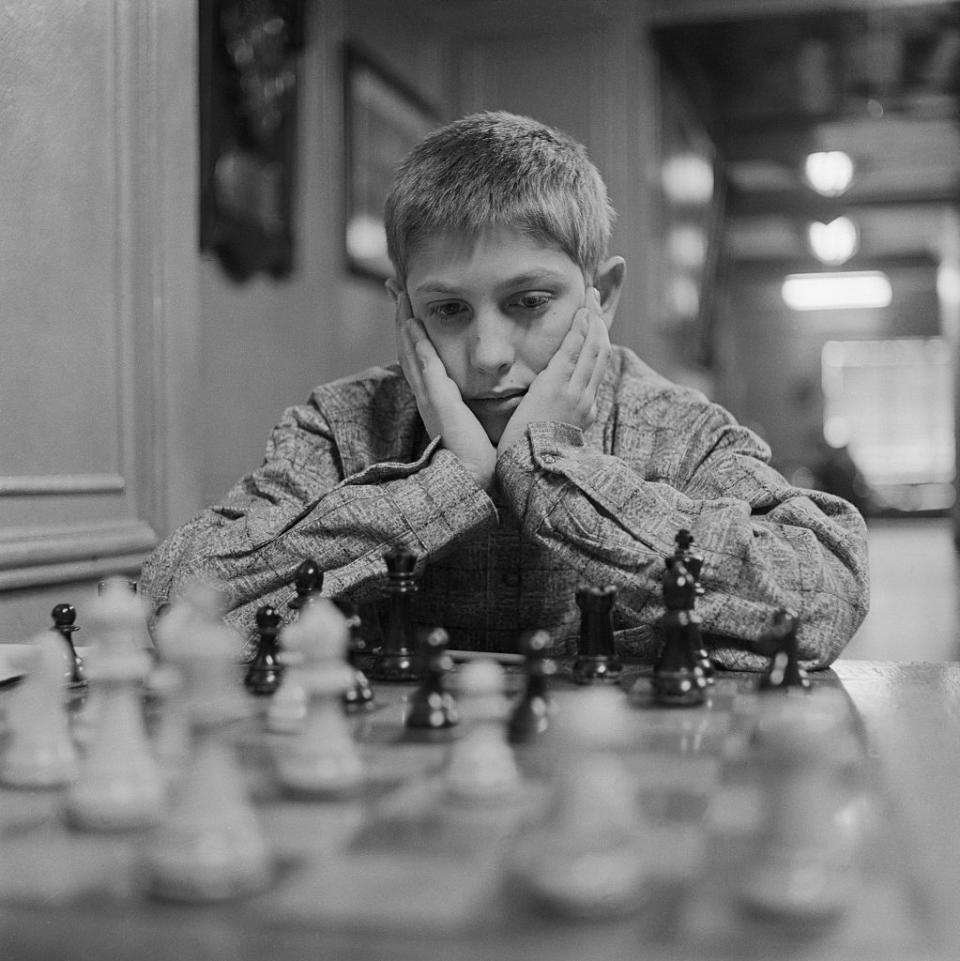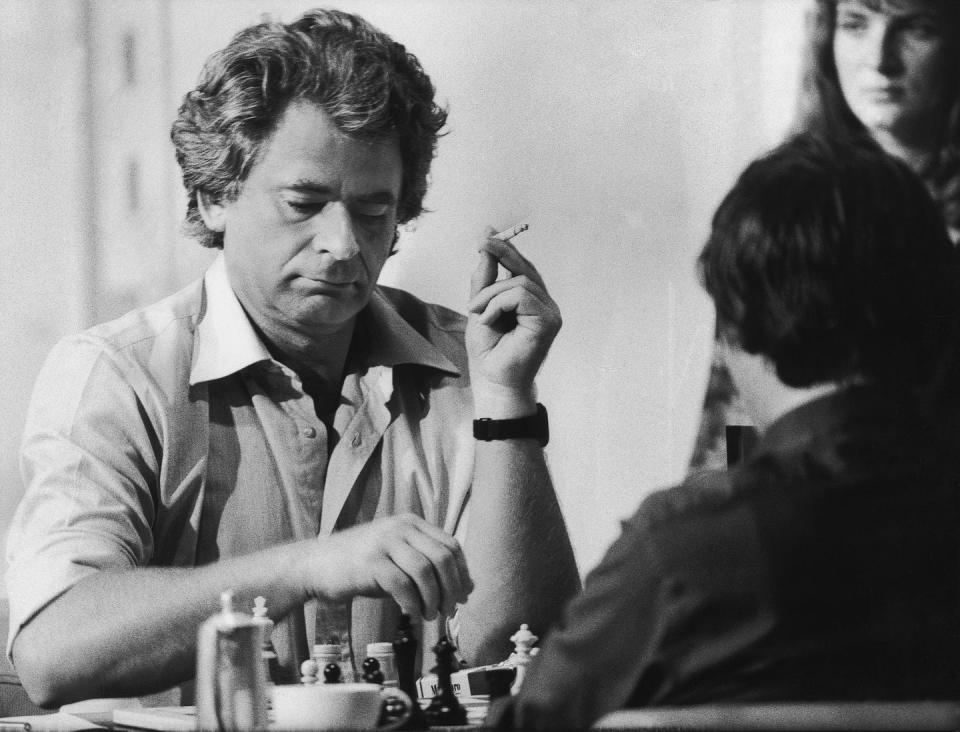The Real-Life Teenage Chess Prodigy That Inspired 'The Queen's Gambit'

The “Queen’s Gambit” is one of the oldest opening moves recorded in the history of chess, dating back to the fifteenth century. It entails White moving its queen’s pawn to the middle of the board and then sacrificing its adjacent pawn on the next move. The “gambit” is to trade a piece for control of the board’s center. It's a risk with a potentially high reward. Walter Tevis chose the move as the title of his coming-of-age story—now adapted into the Netflix series of the same name—The Queen’s Gambit.
The Queen’s Gambit follows chess prodigy Beth Harmon from orphanage through the upper echelons of competitive chess—all while she battles drug addiction.
The series has so far met with both critical and commercial success. Since its premiere in late October, The Queen’s Gambit has held the top spot on Netflix’s power rankings across 63 countries and brought in over 62 million views, making it one of the most successful Netflix original series ever. The Queen’s Gambit was also nominated for two Golden Globes Awards—Best Television Motion Picture (which also includes miniseries) and Best Actress for a Television Motion Picture (Anya Taylor-Joy).
The novel was praised for its accuracy in depicting both chess competition and the prodigies often at its competitive core. The Netflix series depicts an equally intense competitive atmosphere and retains much of the sport's realism.
That realism on set is thanks to the show’s consultants. Actor Anya Taylor-Joy has said that prior to filming—as she refers to it: the “odyssey”—she didn’t know how to play chess. She received instruction from former world champion Garry Kasparov and chess coach Bruce Pandolfini. Pandolfini has written several books on chess and served as consultant for previous chess films such as Searching for Bobby Fischer. He also worked with Tevis on The Queen’s Gambit novel.
In an interview with Entertainment Weekly, Pandolfini explained what went into curating chess matches for the series:
“I devised 92 chess positions to conform to situations in the script, and we called that the Bible. The chess ideas sprung from one of those 92 positions. …We had about 350 positions overall, and most of them are never on camera. The crew would set up these full games with the extras that were not filmed, just to create the proper ambience and feeling.”
Pandolfini also advised on other features of the series, including what chess tournaments would have been like during the time period—“clocks, writing moves down, what the onlookers would be like, the dreariness of the tournament scene, the clubs, the male-dominated [field].” The end result is likely one of the most faithful depictions of the game on screen.
But how much of the story is actually true? Did Tevis base Harmon on a real female chess prodigy?

Who is Beth Harmon based on?
Harmon herself is fictional, though in his Author’s Note, Tevis named some historical personages behind the novel’s protagonist.
The superb chess of Grandmasters Robert Fischer, Boris Spassky and Anatoly Karpov has been a source of delight to players like myself for years. Since The Queen's Gambit is a work of fiction, however, it seemed prudent to omit them from the cast of characters, if only to prevent contradiction of the record.
Tevis also noted Beth’s similarity to himself and said her experience in competitive chess was partially inspired by his own. Tevis reached the level of class C—an amateur ranking more advanced than beginner. (The ranking for class C—by the Elo rating system—is between 1400-1599; for comparison, a beginner is generally ranked at 800 and a grandmaster above 2400. Current world number 1, Magnus Carlsen, holds a 2875 rating.)

Tevis told the New York Times that “I’ve played well enough to know what a good game is. I can beat the average person, but I’m afraid to play those guys who set up boards in the street of Broadway.”
Tevis also based much of Beth’s other characteristics on himself. As he told the Times,
''I was born in San Francisco. When I was young, I was diagnosed as having a rheumatic heart and given heavy drug doses in a hospital. That's where Beth's drug dependency comes from in the novel. Writing about her was purgative. There was some pain—I did a lot of dreaming while writing that part of the story. But artistically, I didn't allow myself to be self-indulgent.''
In general, Tevis said that throughout his literary career, he wrote about “losers and loners.” “I’m obsessed with the struggle between winning and losing,” he said. “In The Queen’s Gambit, my heroine is an outsider.”
But Beth isn't just an outsider based on Tevis. Beth is also a prodigy chasing chess history. For this, she shares similarities with a real-life prodigy.

Beth Harmon and Bobby Fischer
Maybe the most likely real-life chess correlate to Beth is Chess Grandmaster and last American World Chess Champion, Bobby Fischer. Both Fischer and Beth were rising through competitions in the 1960s. Fischer became U.S. Chess Champion in 1957 at the age of 14. (In the novel, Beth accomplishes this feat at 16.) Throughout the 1960s Fischer continued to dominate, though it wasn't until 1972 that Fischer captured the World Chess Championship in his historic match with the USSR's Boris Spassky.
Fischer doesn't share Beth's narcotics problems, but he is a typical Tevis-like outsider. He was expelled from school and then dropped out. He had a strained relationship with his mother and grew up independent. Some described Fischer as lacking social skills and that "in spite of his genius, he was socially awkward, provocative, argumentative and unhappy."
Writing for the Pacific Standard, psychologist Joseph G. Ponterrotto suggests Fischer might have suffered from Asperger's Disorder.
Beth's growing isolation as a chess prodigy likely best imitates Fischer's. And while the description is often cliche, for the cases of Beth and Fischer, it remains apt: "tortured genius."

Vasily Borgov and Boris Spassky
If Beth is most similar to America’s child prodigy Bobby Fischer, then Borgov is most similar to Fischer’s 1972 World Chess Championship opponent—and Russian—Boris Spassky.
We don’t know much about the character of Borgov, other than the fact that he was world champion well before Beth was able to play him. Spassky likewise dominated chess throughout the late 60s and 70s. He won his first World Championship in 1969 at the age of 32. He faced Fischer 3 years later.
That would put Spassky a bit younger than Marcin Dorociński, (47) who plays Borgov. (Fischer was in his late 20s, and so older than Beth; the Netflix series clearly wanted to more vividly demarcate both opponent’s ages.)
In The Queen’s Gambit, Borgov seems to embody an older Spassky, one whose match with his American opponent also draws the world’s attention—not simply because of the U.S.-Soviet tensions but because of both player’s histories: just like Borgov, Spassky had bested Fischer (Beth) multiple times before their 1972 meeting. After one victory, Spassky remembered leaving Fischer in tears. (That would be Beth’s second game against Borgov.)
Spassky is now the oldest living chess champion.
You Might Also Like

